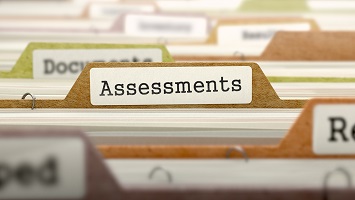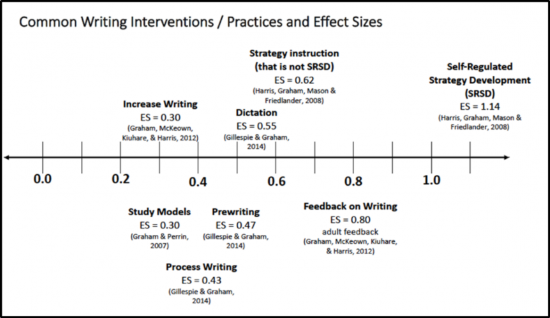 The Division on Career Development and Transition (DCDT) of the Council for Exceptional Children defines transition assessment as an “…ongoing process of collecting data on the individual’s needs, preferences, and interests as they relate to the demands of current and future working, educational, living, and personal and social environments. Assessment data serve as the common thread in the transition process and form the basis for defining goals and services to be included in the Individualized Education Program (IEP)” (Sitlington, Neubert, & LeConte, 1997; p. 70-71). The transition assessment process begins at age 12.
The Division on Career Development and Transition (DCDT) of the Council for Exceptional Children defines transition assessment as an “…ongoing process of collecting data on the individual’s needs, preferences, and interests as they relate to the demands of current and future working, educational, living, and personal and social environments. Assessment data serve as the common thread in the transition process and form the basis for defining goals and services to be included in the Individualized Education Program (IEP)” (Sitlington, Neubert, & LeConte, 1997; p. 70-71). The transition assessment process begins at age 12.
Students age 12 and those referred to special education for the first time who are age 12 and over, must receive an assessment that includes a review of school records and teacher assessments and parent and student interviews to determine vocational skills aptitudes and interests. (8NYCRR 200.4 (viii). This assessment begins the conversation about a student’s strengths, preferences, and interests to inform their educational programs. Additional transition assessments are completed to inform the transition planning process and identify measurable post-secondary goals.
Federal law requires “appropriate measurable post-secondary goals based upon age appropriate transition assessments related to training, education, employment, and, where appropriate, independent living skills”(§300.320[b][1]). (NS (§300.320[b][1]). (NSTTAC) What and how many assessments are needed will depend on the student.
When choosing an appropriate transition assessment, remember that the transition assessment should be completed WITH the student, not done to the student. Choose an assessment appropriate to their developmental and reading level so they may participate to the best of their ability. Information collected from transition assessments should also be communicated to and discussed with all members of the student’s team.
To identify appropriate transition assessments, one should ask “what do I need to know about this student to support their transition planning?” Transition assessments should help articulate measurable post-secondary goals, identify transition needs, and outline skills necessary to be successful in college and careers. A starting point might be to complete a comprehensive transition planning inventory to pinpoint areas of need to assess in more detail.
Fortunately, there are several resources available to support the transition assessment process:
- The National Technical Assistance Center on Transition has published an Age Appropriate Transition Assessment Toolkit at https://transitionta.org/system/files/toolkitassessment/AgeAppropriateTransitionAssessmentToolkit2016_COMPLETE_11_21_16.pdf. This toolkit provides a comprehensive description of the purpose, process, and types of transition assessments.
- The National Technical Assistance Center on Transition has published a list of transition assessments, many of them are available at no cost: https://transitionta.org/sites/default/files/2016%20Transition%20Assessment%20Web%20Sites.pdf.
- The Indiana Secondary Transition Resource Center provides a transition assessment matrix at https://instrc.indiana.edu/transition-resources/transition-matrix.html. Users select the criteria of domain, grade level, and disability areas to identify appropriate transition assessments available in the matrix.
- The Quickbook of Transition Assessment, https://www.ocali.org/up_doc/Quickbook_of_Transition_Assessment.pdf, provides a collection of informal assessments to guide the transition planning process in a variety of areas, including employment, independent living, recreation and leisure, community participation, and post-secondary and lifelong learning.
These resources are a great way to start exploring transition assessments. The type of assessment for each student should be carefully chosen based on what information is needed to inform the transition planning process. Stay tuned for more resources from the digital detective!


 Data-Driven Decision-Making
Data-Driven Decision-Making  Increasing Post-School Success through Interagency Collaboration
Increasing Post-School Success through Interagency Collaboration  How Can We Improve Deeper Learning for Students with Disabilities?
How Can We Improve Deeper Learning for Students with Disabilities?  Positive Classroom Management: Creating an Environment for Learning
Positive Classroom Management: Creating an Environment for Learning  Self-Determination Skills Empower Students of All Ages
Self-Determination Skills Empower Students of All Ages  Fidelity of Implementation: What is it and Why does it Matter?
Fidelity of Implementation: What is it and Why does it Matter?  Rethinking Classroom Assessment
Rethinking Classroom Assessment  A Three-Step Approach to Identifying Developmentally Appropriate Practices
A Three-Step Approach to Identifying Developmentally Appropriate Practices  Transforming Evidence-Based Practices into Usable Innovations: A Case Study with SRSD
Transforming Evidence-Based Practices into Usable Innovations: A Case Study with SRSD